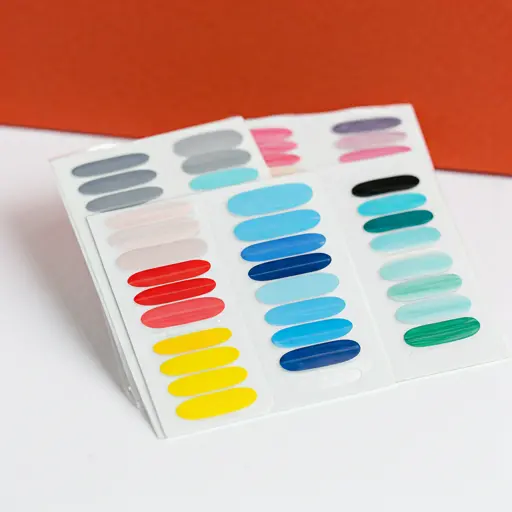How Long to Become an Expert in Beauty & Skincare?
The beauty and skincare industry is booming, with more people seeking professional treatments to enhance their appearance and boost their confidence. If you’re passionate about helping others look and feel their best, a career as an esthetician might be the perfect fit. But one of the most common questions aspiring estheticians ask is, “How long does it take to become an esthetician?” In this comprehensive guide, we’ll break down the steps, timelines, and requirements to help you understand the journey to becoming a skilled esthetician. For an in-depth look at this topic, check out this detailed resource on how long does it take to become an esthetician.
What Is an Esthetician?
An esthetician is a licensed skincare professional trained to provide treatments like facials, chemical peels, microdermabrasion, waxing, and makeup application. They work in spas, salons, dermatology clinics, or even run their own businesses. Estheticians not only perform cosmetic procedures but also educate clients on proper skincare routines, making them an essential part of the beauty and wellness industry.
Becoming an esthetician requires a blend of formal education, hands-on training, and licensure, but the timeline can vary depending on several factors. Let’s dive into the details.
Step 1: Complete an Esthetician Training Program
The first step to becoming an esthetician is enrolling in a state-approved esthetician training program. These programs are offered by cosmetology schools, community colleges, or specialized beauty academies. The curriculum typically covers topics like:
- Skin analysis and anatomy
- Facial techniques and treatments
- Hair removal methods (waxing, threading, etc.)
- Makeup application
- Sanitation and safety practices
- Client consultation and business skills
How Long Does the Training Take?
The duration of esthetician programs varies by state and country due to differing licensing requirements. In the United States, most states require between 600 and 1,200 hours of training to qualify for licensure. Here’s a breakdown of how long this might take:
- Full-time programs: If you attend school full-time (30–40 hours per week), a 600-hour program can take about 3–6 months to complete. A 1,200-hour program might take 6–12 months.
- Part-time programs: For those balancing work or other responsibilities, part-time programs (15–20 hours per week) can extend the timeline to 6–12 months for a 600-hour program or 12–18 months for a 1,200-hour program.
Some states, like California, require 600 hours, while others, like New York, may require up to 1,000 hours. Always check your state’s specific requirements before enrolling.
Step 2: Pass State Licensing Exams
After completing your training, you’ll need to pass a state licensing exam to practice as an esthetician. Most states require both a written exam and a practical exam to demonstrate your knowledge and skills.
How Long Does Licensing Take?
- Preparation: Depending on your study habits, preparing for the exams might take 2–8 weeks. Some schools include exam prep in their curriculum, which can streamline this process.
- Scheduling and testing: Once you’re ready, scheduling the exam can take a few weeks, depending on availability at testing centers. The exams themselves are typically completed in a single day.
In total, the licensing process can add 1–2 months to your timeline, assuming you pass on your first attempt. If you need to retake the exam, this could extend the process by a few additional weeks.
Step 3: Gain Practical Experience
While not always mandatory, gaining hands-on experience is crucial for building confidence and expertise as an esthetician. Many new estheticians start by working in entry-level roles at spas or salons to refine their skills and build a client base.
How Long Does It Take to Gain Experience?
- Entry-level positions: Working for 6–12 months in a spa, salon, or clinic can help you master techniques and develop client relationships.
- Specialization: If you want to specialize in advanced treatments like microblading, laser hair removal, or chemical peels, you may need additional certifications, which can take 1–3 months per course.
Step 4: Consider Advanced Certifications (Optional)
To stand out in the competitive beauty industry, many estheticians pursue advanced certifications in areas like:
- Medical esthetics (working alongside dermatologists)
- Laser treatments
- Microblading or permanent makeup
- Advanced skincare techniques (e.g., dermaplaning)
These certifications can take anywhere from a few weeks to several months, depending on the program’s intensity and your schedule. While optional, they can significantly boost your earning potential and expertise.
Total Timeline to Become an Esthetician
Here’s a summary of the timeline to become a licensed esthetician:
- Training program: 3–18 months (depending on full-time or part-time enrollment and state requirements)
- Licensing exams: 1–2 months (including preparation and scheduling)
- Gaining experience: 6–12 months (optional but recommended)
- Advanced certifications: 1–6 months (optional)
In total, you can expect to spend 6 months to 2 years becoming a fully licensed esthetician, with additional time for specialization or experience. The exact timeline depends on your state’s requirements, your availability, and whether you pursue advanced training.

Factors That Affect the Timeline
Several factors can influence how long it takes to become an esthetician:
- State requirements: Each state has different training hour requirements, so check with your state’s cosmetology board.
- Program schedule: Full-time programs are faster, while part-time programs accommodate those with busy schedules.
- Financial considerations: Tuition costs can range from $5,000 to $20,000, so you may need to work while studying, which can extend your timeline.
- Career goals: If you aim to specialize or work in a medical setting, additional certifications will add time.
Why Become an Esthetician?
Becoming an esthetician is not just about learning skincare techniques—it’s about transforming lives through beauty and self-care. Here are a few reasons to consider this rewarding career:
- Flexibility: Estheticians can work in various settings, from luxury spas to medical offices, or even start their own businesses.
- Creativity: The role allows you to express your creativity through makeup artistry and personalized skincare treatments.
- Job growth: The beauty industry is growing, with a projected 11% increase in demand for skincare specialists by 2030, according to the U.S. Bureau of Labor Statistics.
- Client impact: Helping clients feel confident in their skin is incredibly fulfilling.
Tips for Success on Your Esthetician Journey
- Research programs thoroughly: Choose a reputable school with a strong curriculum and good reviews.
- Network early: Build relationships with instructors, peers, and industry professionals during your training.
- Stay updated: The beauty industry evolves quickly, so keep learning about new products, techniques, and trends.
- Practice self-care: As an esthetician, you’ll be on your feet for long hours, so prioritize your physical and mental health.
Ready to Start Your Esthetician Career?
Becoming an esthetician is an exciting journey that combines creativity, science, and client care. While the timeline can range from 6 months to 2 years, the investment in time and effort is well worth it for a fulfilling career in beauty and skincare. If you’re ready to take the next step, explore for more insights and resources to kickstart your journey.
Whether you’re dreaming of running your own spa or working in a high-end salon, the path to becoming an esthetician is within reach. Start today, and you’ll be transforming skin—and lives—in no time!






